Personal Floatation Device (PFD)
A PFD (Personal Flotation Device) is the single most important piece of safety gear you own since it helps keep your head above water. Beyond comfort and style, there are a few other things you should consider:
- Choose bright colors, such as red, orange, and yellow that make you visible to a rescuer.
- Get as much flotation as possible without giving up too much range of motion.
- If you’re overweight and/or pear shaped you should consider a PFD that works with leg straps that help keep the PFD on your body.
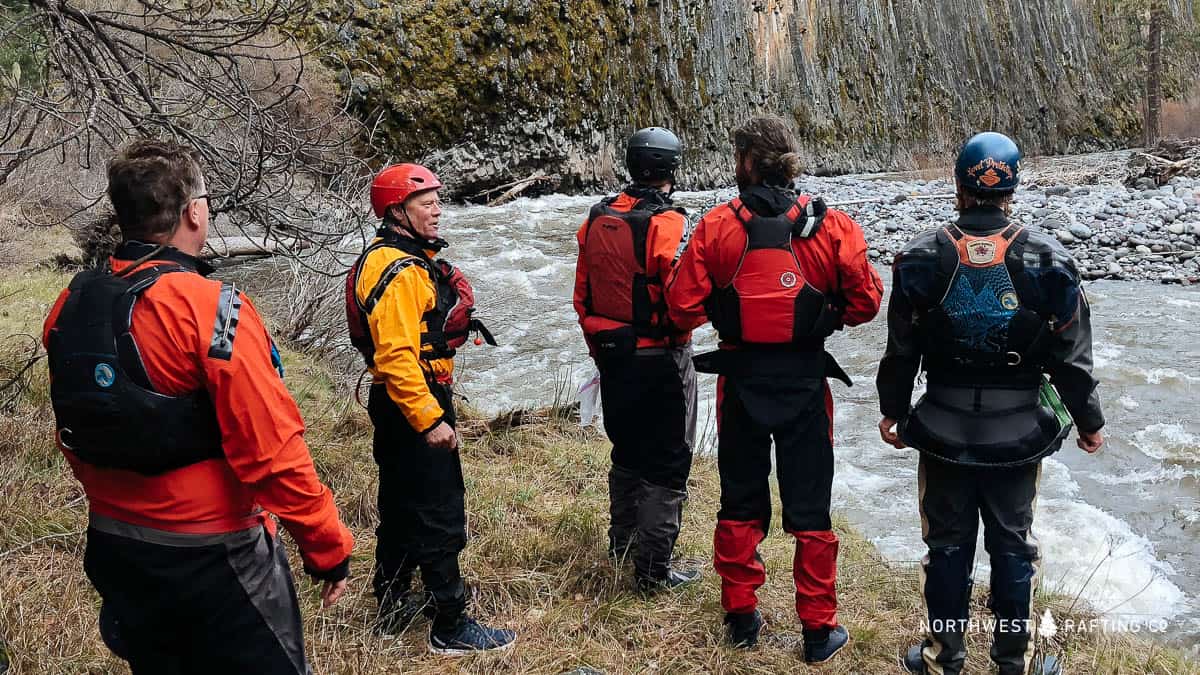
Other considerations when purchasing a PFD:
- If you want to jump in the river while attached to a rope in an effort to save others, get some training before considering a “rescue vest.”
- Pockets on the chest and on the sides are good for carrying flip lines, prusiks, and other rescue gear.
- Some people consider PFDs that zip up the front to be safer in case you are pinned on a log or some other obstacle and need to free yourself from the PFD.
My PFD Pick: NRS Big Water Guide PFD
Helmets
There are a ton of good helmets out there and it’s hard to say that one brand is safer than another. In general, Sweet Protection Helmets are amazing, but they are also incredibly expensive. WRSI Helmets make a good and more affordable option.
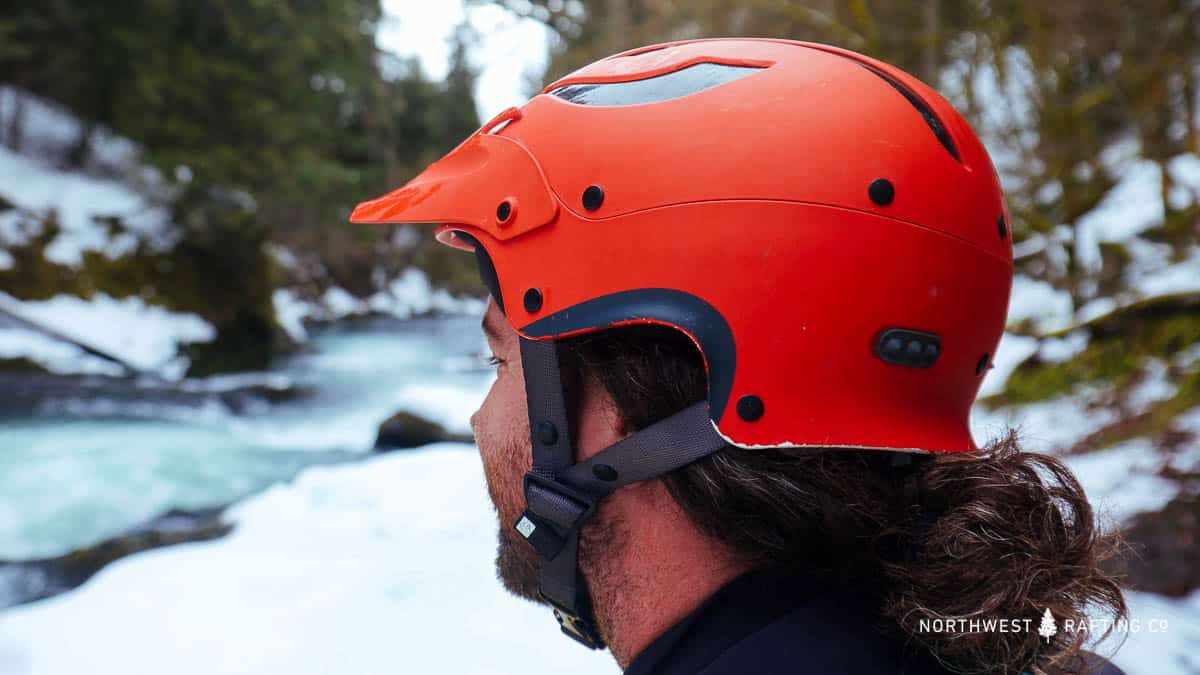
Here are a few things to consider:
- Bright color
- Comfort
- Fashion
- Built-in sun visor
My Helmet Pick: Sweet Protection Rocker Helmet
Drysuits versus Wetsuits
Proper dress for air and water temperatures is an important safety consideration. If you are underdressed you are susceptible to hypothermia or other medical conditions that arise from cold water immersion. We are commonly asked about the difference between a wetsuit and a dry suit.
When it’s cold, a dry suit is really nice to have. These are made from waterproof fabric that you step into and zip up with a waterproof zipper. You put your head and hands (and sometimes feet) through latex rubber gaskets. If your suit is in good shape, you’ll generally be dry and warm, except for your perspiration. Dry suits are a nice luxury if you can afford one but they do require regular maintenance of the fabric, gaskets, and zippers.
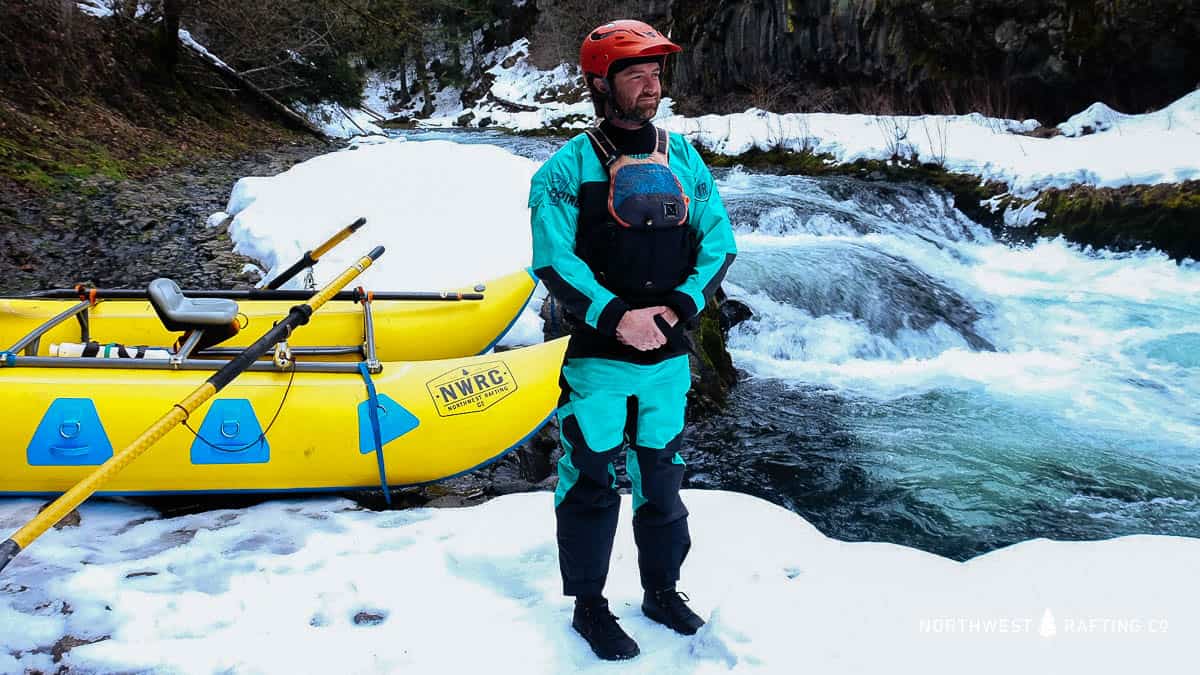
My Drysuit Pick: Immersion Research Devil’s Club Drysuit
Wetsuits don’t keep you as warm as dry suits but they have some distinct advantages. Dry suits and gaskets can tear, or the zippers can break, making them ineffective and potentially dangerous to wear. If temperatures warm up you can easily drop a layer of fleece or roll up the legs of a wetsuit so they work in a wider range or temperatures. Most people combine a farmer john style wetsuit with a fleece shirt and paddle jacket. Wetsuits are also much less expensive than dry suits and don’t require annual or semi-annual replacement of the neck and wrist gaskets.
My Wetsuit Pick: Stohlquist Rapid John Wetsuit
Shoes
The most common river injuries are to feet. An old pair of tennis shoes or sandals can work but are not ideal shoes for getting around wet slippery rocks and obstacles.
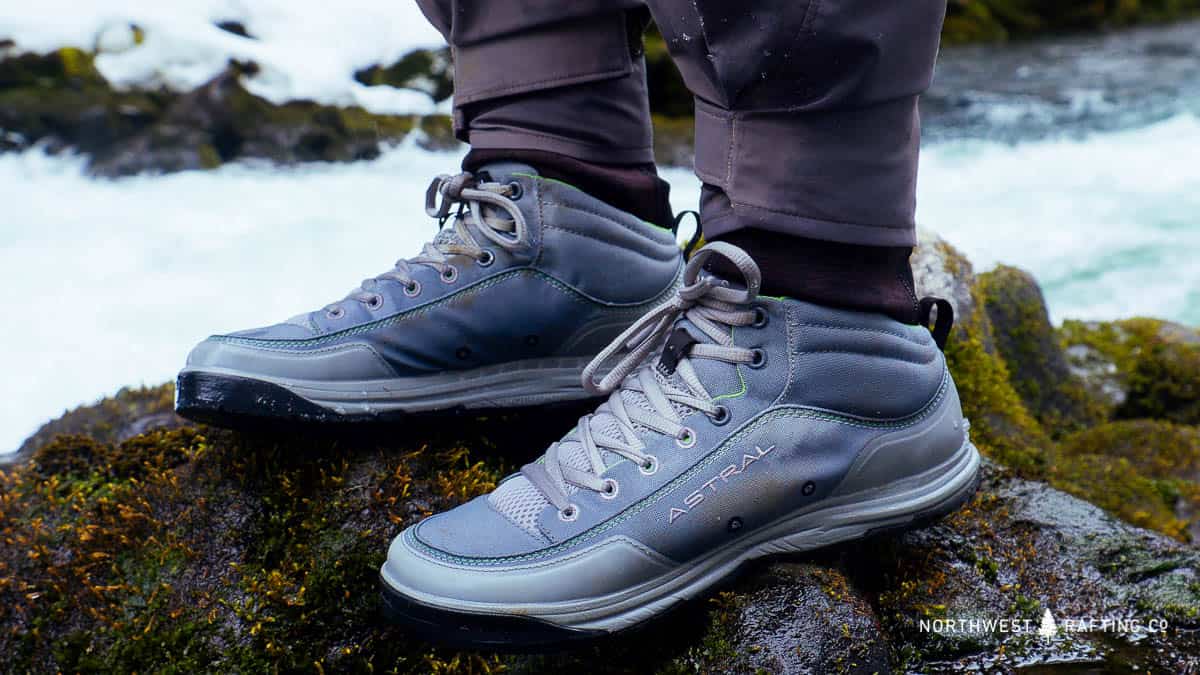
Here are some considerations:
- Soles that grip on wet rock are important
- Choose shoes that protect the top of your foot and toes
- Shoelaces are something that could potentially snag on something in the river
- Style
My Pick: Astral Brewer 2.0 Shoes
Throw Bag
Throw bags are on of the most important rescue tools but require training before use. Here are a few considerations:
- When choosing length, get the longest length you can accurately throw
- 5/16” or thicker rope is a good diameter for effective pulling
- Rope with a Spectra or Dyneema core is stronger than traditional throw bag ropes
- Brighter colors like red, orange, or yellow make the bag easier to see
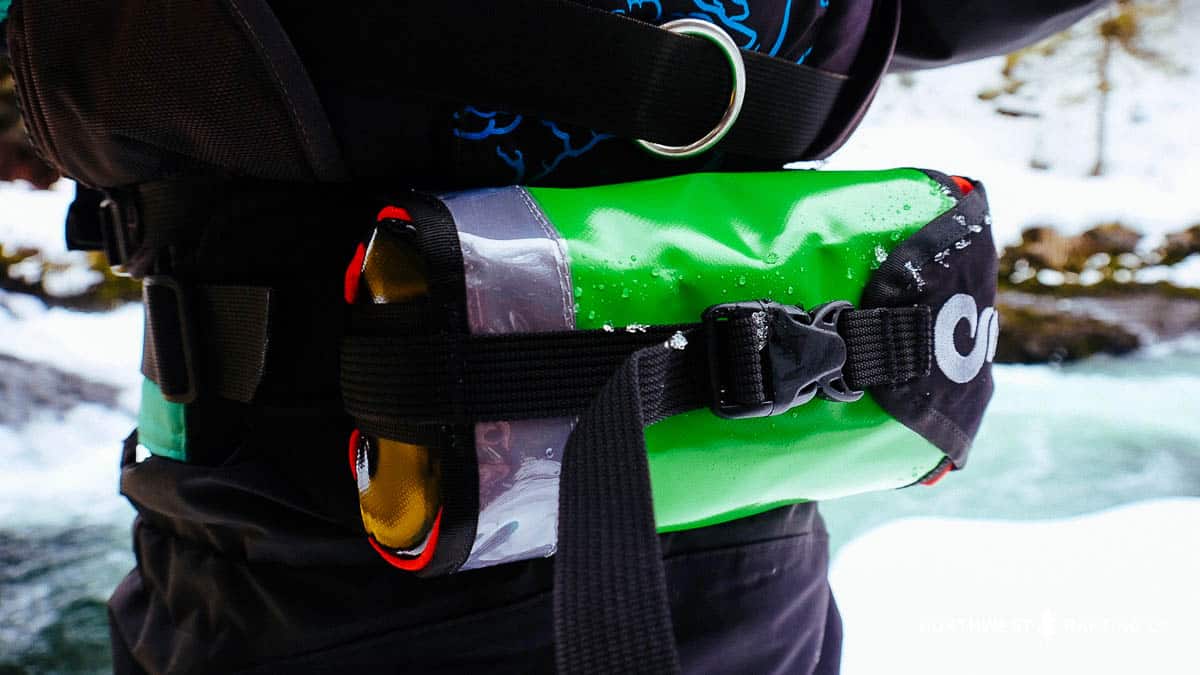
My Throw Bag Pick: WWTC Waistbelt Throwbags
River Knife
It is generally a good idea to carry a river knife with a serrated blade to cut ropes, webbing, or other things that may catch a person or equipment in the moving current. Most people choose blunt-tipped knives with serrated blades made specifically for cutting rope. Some people like having a sharp tip to cut through boats or other equipment in an emergency. There are generally two types of river knives:
- Folding knives should be able to be opened with one hand and stored in pocket of a PFD. These knives take a little longer to access when needed in an emergency.
- Externally mounted sheath knives provide the quickest access and look really cool. Most of these knives can accidentally slip out of the sheath. These knives can get hung up on rafts when trying to get back in or on a strainer during a swim.
My River Knife Pick: Gerber E-Z Out Rescue Knife
Whistle
A whistle is crucial piece of gear necessary for emergency communication with other boaters. Make sure your whistle is brightly colored and works when wet. It’s a good idea to attach it to your PFD via a small lanyard or keyring in a way that you can quickly use it.
My Whistle Pick: Fox 40 EPIK CMG Whistle
Personal Rescue Equipment (PRE)
Each boat and/or guide with proper training should have a small personal safety kit to help with mechanical advantage systems and swift-water rescue. At a minimum, your safety kit should follow the 4:3:2:1 principle and include:
- 4 Locking Carabiners
- 3 Pulleys
- 2 Prusiks (6mm Sterling Auto Block is my favorite)
- 1 Flip line that can also double as raft or tree anchor
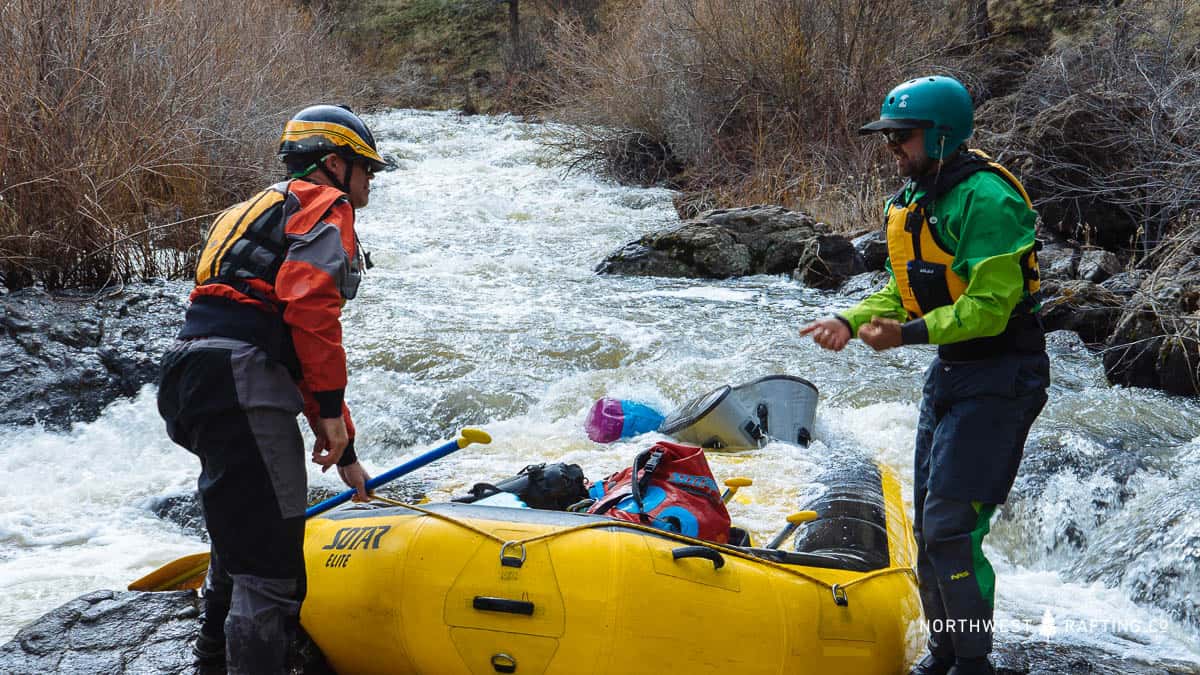
My Flip Line Pick: Palm Cobra Sling with Rock Exotica Locking Carabiner
Throw bag rope is typically not enough for many rescues, so consider carrying a 150’ to 200’ static line on every trip.
Clean Line Principle
There is no commonly accepted Clean Line Principle text, so I’m going to write one below.
“Whitewater paddlers should minimize or eliminate extra external lines or straps on their bodies and whitewater boats to minimize the possibility of entrapments while in the boat or while swimming.”
Here are a few things to keep in mind with your personal gear to follow the Clean Line Principle.
- Consider putting your flip lines in your PFD pocket
- When using an external knife, avoid adding cords that keep the knife in its sheath
- If you clip carabiners to your PFD, make sure they are locking carabiners and are locked
- Tighten all PFD straps and safety harnesses
There are a lot of different opinions or ideas for personal equipment and I am always learning. If you have something to contribute, please add it to the comment section below.

